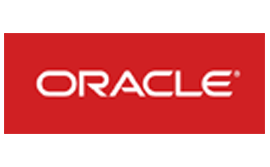
LUKOIL
Implementing a calendar planning system for large capital projects of West Qurna-2 based on Oracle Primavera
Implementing a calendar planning system for large capital projects at West Qurna-2 based on Oracle Primavera as part of the an integrated information system project
Project Objectives
- Integration into a single vertical schedule of all asset projects, such as aims related to construction of field infrastructure and supporting activities (marketing, security, environment, etc.).
- Provision of a shared information environment to all stakeholders of the planning and control process.
- Increase accuracy of the follow-up process through automatic accounting of actual data contained in related systems
The calendar planning and follow-up system was based on the following principles:
- Multi-level planning – Each planning and follow-up level is focused on a specific level of process control and has a specific breakdown, however the graphs are vertically integrated.
- Rolling wave planning – General long-term planning including key steps of project implementation. It precedes detail planning for near future with specified dates and persons responsible for tasks of a working program.
- Forecasting – Regular adjustment of plans using a critical path enables users to determine critical activities impacting timely progress of a project and to adjust methods of work to minimize delays
To implement these principles, ITPS had to address both methodological and technical issues. In terms of methodology:
- The typical work breakdown structure (WBS) for all projects was standardized and synchronized to a certain degree with a cost structure in the accounting system, thus:
- forming a framework and managing changes in general for a project
- enabling planners and project managers to view related projects when building connections between projects
- making integration with SAP ERP easier
- Now project progress is measured not only in terms of time, but also in terms of costs (actual value of work performed), thus allowing operational control both of key project events and deviations from target dates and general progress of a project portfolio (working program).
When creating the information system, ITPS:
- Rolled out Primavera P6 EPPM in a centralized data base, ensuring synchronized operation of all process users by updating data on a centralized server
- Developed and implemented an integration solution using SAP XI/PI to ensure two-way data communication between the accounting system and the planning and follow-up module (SAP ERP automatically generates cost records when works are added to a schedule for new facilities and Primavera P6 EPPM shows actual progress of the project schedule).
Documents
LUKOIL Overseas Holding Ltd. optimizes projects for oil field development ** pdf 418.57 Кб Показать все документыResult
Implementation of the calendar planning and follow-up system based on Oracle Primavera:
- Creation of a tool for planning and following up a working program at all management levels for all project stakeholders as well as unified requirements for structure and content of data in a working program
- Engaging of line managers and specialists within a project environment with the project model for managing internal and external teams
- Implementation of a practical tool for planning and following up progress of a working program to enable managers to take operational decisions based on actual data.
- Now multiple project teams can work with their projects in a single, centralized database and define dependencies between projects, if necessary.
** The material is available in Russian version only

